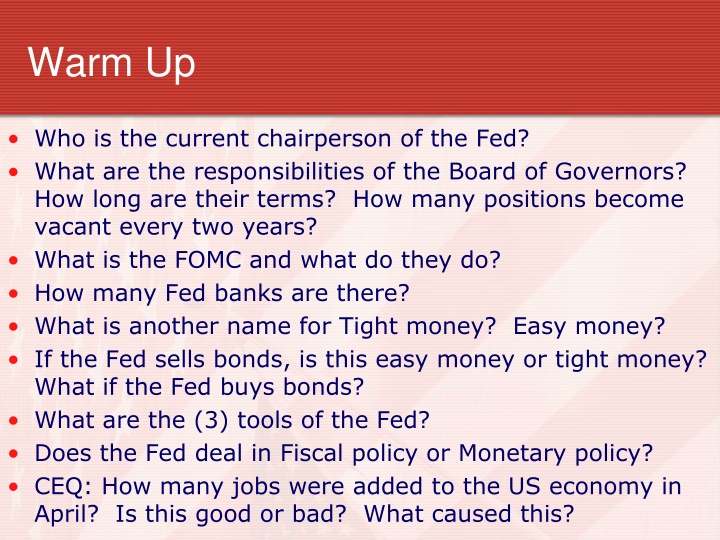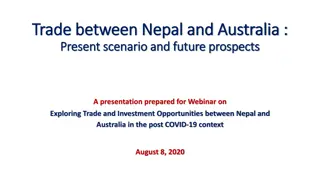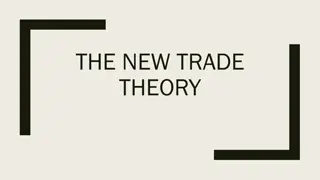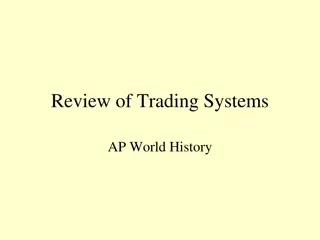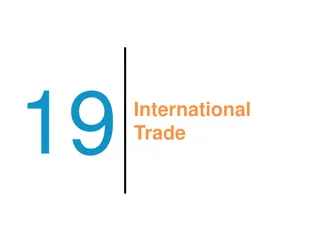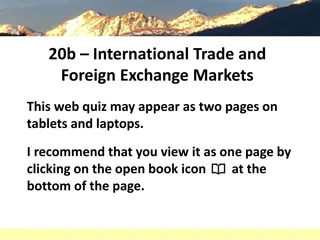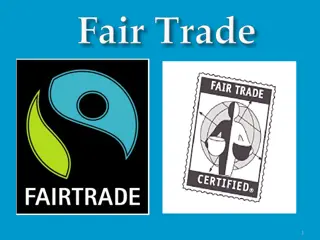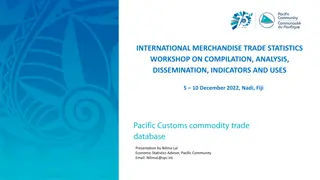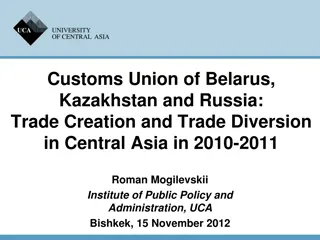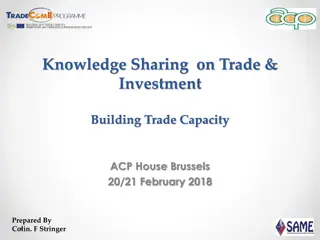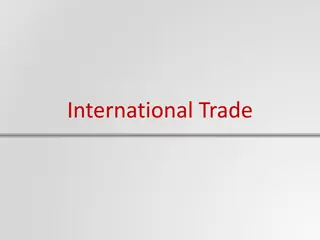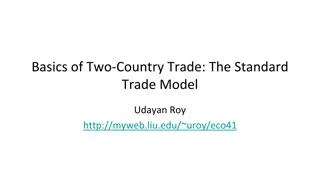International Trade Dynamics
Dive into the intricacies of global economics with a focus on international trade, including the functions of the Federal Reserve, trade specialization, comparative advantage, and barriers to trade such as tariffs and quotas.
Download Presentation

Please find below an Image/Link to download the presentation.
The content on the website is provided AS IS for your information and personal use only. It may not be sold, licensed, or shared on other websites without obtaining consent from the author.If you encounter any issues during the download, it is possible that the publisher has removed the file from their server.
You are allowed to download the files provided on this website for personal or commercial use, subject to the condition that they are used lawfully. All files are the property of their respective owners.
The content on the website is provided AS IS for your information and personal use only. It may not be sold, licensed, or shared on other websites without obtaining consent from the author.
E N D
Presentation Transcript
Warm Up Who is the current chairperson of the Fed? What are the responsibilities of the Board of Governors? How long are their terms? How many positions become vacant every two years? What is the FOMC and what do they do? How many Fed banks are there? What is another name for Tight money? Easy money? If the Fed sells bonds, is this easy money or tight money? What if the Fed buys bonds? What are the (3) tools of the Fed? Does the Fed deal in Fiscal policy or Monetary policy? CEQ: How many jobs were added to the US economy in April? Is this good or bad? What caused this?
Absolute and Comparative Advantage
The Key to Trade Specialization is the key to trade How do you know what a country specializes in? Where do you look? You look at its EXPORTS- the goods and services that it produces and then sells to other nations
The US and International Trade Int l trade for the US is beneficial and necessary Goods and services are traded IMPORTS- goods and services that one country buys from other countries What would it be like with no imports?
The Basis for Trade Absolute Advantage-when a country can produce a product more efficiently (a greater amount) than can another country Sometimes, it is cheaper to import a product than to make it yourself
Total Output Before Specializing Total Output After Specializing Country A Country B Country A Country B Coffee 20 + 5 =25 Coffee 40 + 0 =40 Cashews 4 + 1 =5 Cashews 0 + 6 =6
Comparative Advantage The ability to produce a product relatively more efficiently, or at a lower opportunity cost.
Barriers to International Trade Done through 2 major ways: Tariff-a tax placed on imports to increase their price in the domestic market (graph) Quota-a limit placed on the quantities of a product that can be imported- leads to a decrease in supply (graph)
2 Kinds of Tariffs Protective-a tariff high enough to protect less-efficient domestic industries Real-life example Revenue-a tariff high enough to generate revenue for the government Customs duties
Arguments For Protection National Defense (security) Becoming too dependent on foreign countries a nation should be self-sufficient in goods necessary for war
Promoting Infant Industries New and emerging industries within a country that need protection from other more established foreign industries Cars in Latin America
Protecting Domestic Jobs- employment protection argument Tariffs and quotas are necessary to protect American jobs that could go foreign if not protected. Complacency and improvement arguments
The Inevitable Argument All nations have barriers to trade so barriers should be erected
The Industry Argument Certain industries should be protected from competition
The Free Trade Movement World Trade Organization (WTO) 1947- Int l agency that settles disputes, organizes trade negotiations, provides technical assistance for countries
NAFTA North American Free Trade Agreement All about cost-benefit analysis Free trade has allowed countries to capitalize on comparative advantages for everybody s benefit
Trade Deficits and Surpluses Trade deficit-occurs when the value of the products it imports exceeds the value of products it exports. Trade Surplus-occurs when the value of products it exports exceeds the value of products it imports.
The International Value of the Dollar A stronger dollar compared to other currencies- results in a trade deficit; our products become more expensive worldwide. A weaker dollar compared to other currencies- results in a trade surplus, or balance of trade; our products become less expensive worldwide.
